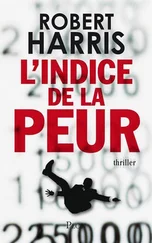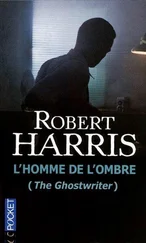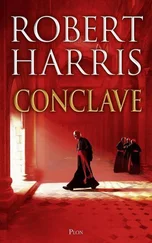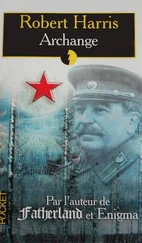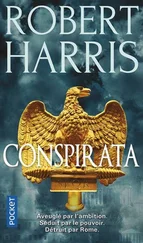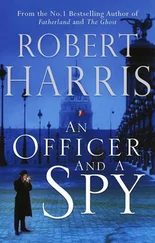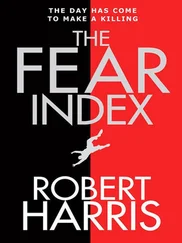I saw a little old man in a big bed between freshly laundered sheets, his head propped up by three big downy pillows, looking at me with vacant eyes, mumbling words to himself, raising his voice only once, and then only to order us out of the room rather rudely. ‘Dammit,’ he said, not only with some emphasis, but with a vigour that astounded me, ‘don’t you see I’m an old man? So why don’t you let me die in peace?’
For this, Farago was reported to have been paid an advance by his American publishers, Simon and Schuster, of more than $100,000.
Heidemann, like Farago, believed Bormann had survived. He subsequently claimed to have been given information to this effect by Klaus Barbie. When he returned to Germany from his honeymoon on 30 August he told Braumann ‘he was more convinced than ever that Bormann was alive: there was a whole series of indications’. He showed Erich Kuby a collection of twelve by ten inch photographs, which he had brought back from South America. ‘They included a set of pictures supposedly of Bormann,’ recalled Kuby. ‘Heidemann said he had not taken them himself but had been given them.’ As had been the case with the pictures of the Kaiser’s son six years earlier, the photographs fascinated Heidemann. He spent hours poring over them, tracing the subject’s profile and the shape of his ears. ‘He was convinced,’ said Kuby.
His employers on Stern , however, were less impressed. Before he left, Heidemann had persuaded them to help pay for the trip. His expenses – excluding air fares – amounted to 27,000 marks. But once again they found themselves with little to show for their money. ‘After his return from South America,’ noted the Stern Report , ‘although he had masses of tape recordings and transcripts, none of it produced very much which was usable for the magazine.’ This failure, combined with the high cost of the South American expedition, put Heidemann’s position on the magazine ‘in jeopardy’ for the first time in almost twenty-five years. Heidemann retaliated by spreading rumours that he was considering offers for his services from Stern ’s rivals, Bunte and Quick .
The extent of Heidemann’s gullibility, of his almost pathetic eagerness to believe what he was told, was clearly demonstrated in 1979. There was the affair of the ‘Bormann’ photograph; there was also the affair of the Churchill–Mussolini correspondence.
While working with Kuby, Heidemann had become involved with a former SS officer named Franz Spoegler. Spoegler, who had been one of Mussolini’s German adjutants, claimed to have access to thousands of pages of transcripts of Mussolini’s telephone conversations with his mistress, Clara Petacci. He also said he could produce some sensational correspondence between the Duce and Winston Churchill. Heidemann was enormously excited. ‘Over a period of about eighteen months,’ recalled Kuby, ‘he was always chasing Spoegler to get hold of these documents.’
On 17 February 1979, Heidemann approached David Irving, who was in Hamburg to take part in a television programme. Irving had edited the diaries of Goering’s deputy, Field Marshal Milch, and Heidemann – with his mania for collecting anything to do with Carin II – asked Irving for a copy of an entry referring to a conference aboard the yacht. Then he told Irving about the Churchill–Mussolini correspondence. ‘He knew that I was writing a Churchill biography,’ said Irving. ‘He wanted to use me to get to English newspapers with these Mussolini letters.’ That night, in his diary, Irving made a note of his conversation with Heidemann:
He has at his private address a few letters from WSC to Mussolini, in English, dated up to 1941 (!) in which latter letter for instance WSC complains about the pro-German attitude of the Pope. The purpose of the WSC letters (to which G.H. does not have Musso’s replies) was to try to break Mussolini out of the Axis. The letters are both typescript originals and photocopies.
Irving was intrigued and immediately on his return to London he wrote Heidemann a letter ‘in order to confirm in writing my interest in the Churchill letters to Mussolini which you mentioned’. Nine months later, at the end of November 1979, Heidemann rang the British historian and asked him to come to Hamburg as quickly as possible. On 2 December, Irving arrived at the Heidemanns’ flat.
Heidemann [recalled Irving] took me into the office next to his living room. On the bookshelves were between 50 and 70 large loose-leaf folders. He opened two or three of them and showed me transcripts he had written up himself of conversations with Karl Wolff and other leading figures from the Third Reich. Some of the conversations had taken place in South America…. He described Karl Wolff as someone who had opened doors. I think the name Mengele was mentioned.
From one of the folders, Heidemann produced photocopies of correspondence between Mussolini and Churchill covering almost six years. The first letter, dated 20 May 1939, was from Churchill, urging Mussolini not to sign the so-called ‘Pact of Steel’ with Hitler. The last letter, from Mussolini, written in April 1945, was a cryptic appeal to the British Prime Minister to remember their ‘earlier agreements’. In addition to the correspondence already in his hands, Heidemann, according to a memorandum Irving wrote shortly afterwards, had:
a two-page typed list from his source listing all the other correspondence on offer, giving dates and synopses of the letters concerned. They display a close knowledge of the politics of the era, for example in July 1940 (?) Churchill offering Mussolini a revision of the frontier between Uganda and Kenya to Italy’s advantage if Italy would withdraw from the Axis; he also offers a separate peace to Italy, at France’s expense….
For a moment, Irving was electrified. Here was evidence of secret dealing between the leaders of two warring nations. If it were true, it would create a sensation.
Unfortunately for Heidemann, as Irving pointed out after a careful examination, the letters were obvious fakes. In what purported to be a handwritten Churchill letter to Mussolini dated 7 May 1940 there were four clues to suggest it was a forgery: the Chartwell letterhead was centrally placed rather than printed on the right; in the text, Churchill referred to his impending appointment as prime minister – something which did not occur for another three days and which at that stage he was unlikely to have anticipated; the letter contained a misspelling of ‘wich’ for ‘which’ – ‘a common spelling error made by foreigners’, commented Irving; and finally the handwriting itself, in his view, was ‘slightly too ragged’.
This was a bitter disappointment to Heidemann. Spoegler, according to Kuby, had demanded 65,000 marks for the correspondence, and Heidemann told Irving he had ‘mortgaged one-quarter of Carin II ’ to pay for it. Having spent more than a year pursuing the documents he now saw their authenticity virtually demolished in the space of an afternoon. When Irving returned to London, he sent a copy of the letter dated 7 May 1940 to Churchill’s official biographer, Martin Gilbert, for his opinion. On 17 December, Irving wrote to Heidemann telling him that Martin Gilbert ‘clearly dismisses the possibility of authenticity…. Under no circumstances should you part with more money unless you are absolutely convinced.’ For Heidemann, the news that his investment had been wasted could not have come at a worse moment.
Despite the 60,000 marks he had been paid by Nannen in 1976, Heidemann’s financial position had steadily worsened. To ease the problem temporarily, on 9 May 1977, under a scheme open to Gruner and Jahr employees, he had taken out a two-year company loan of 10,000 marks. Exactly a year later, on 9 May 1978, he had borrowed a further 30,000 marks. Adding together this new loan, the balance still outstanding on the old one, and the money he had been paid for Bord Gespräche , Heidemann at this point owed his employers 94,960 marks: considerably more than a year’s salary.
Читать дальше

